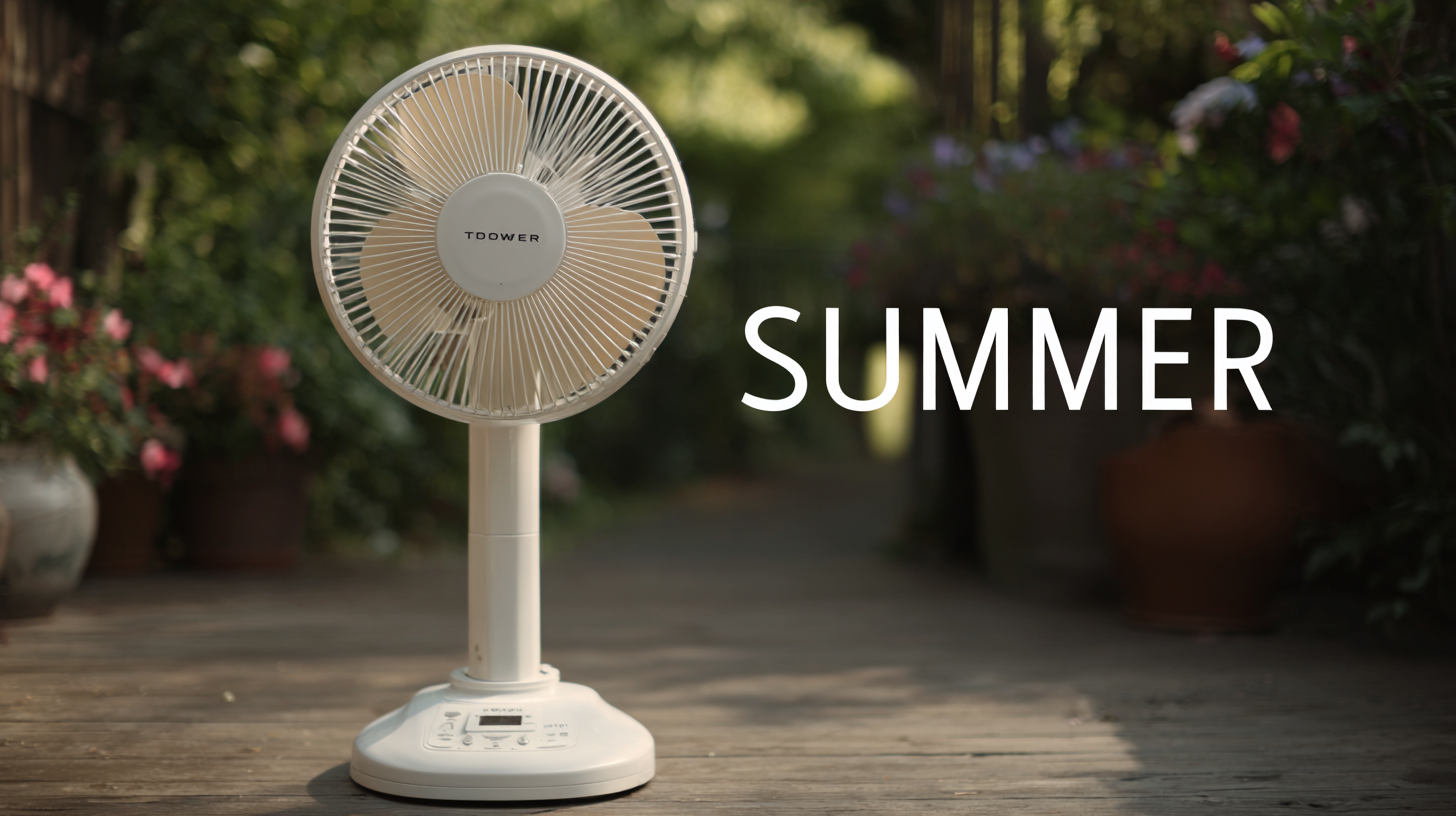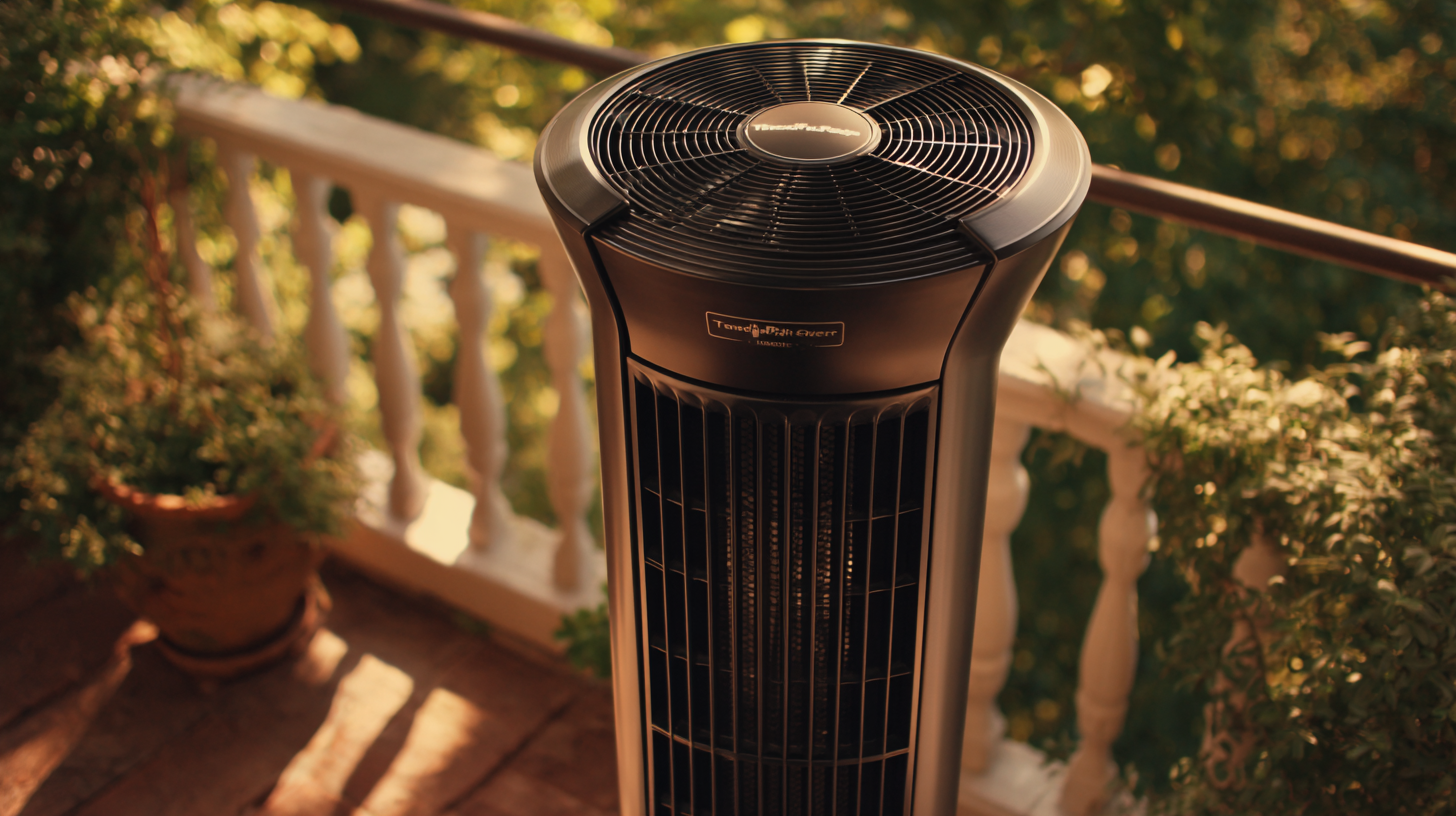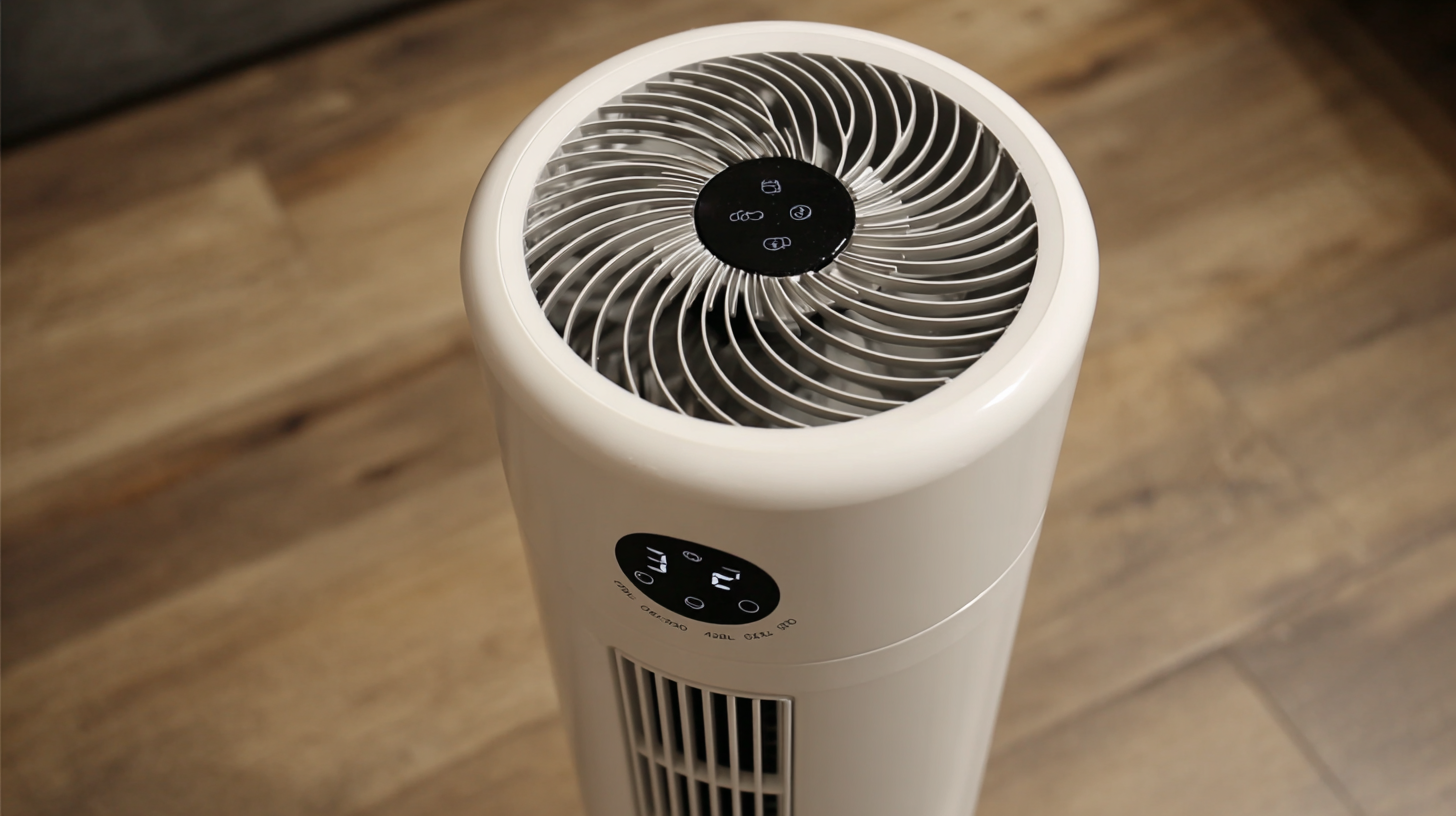
Understanding the Limitations of the Best Tower Fan in Summer Heat
As the summer heat intensifies, many consumers turn to Tower Fans for relief, drawn by their sleek design and efficient airflow. However, understanding the limitations of the best Tower Fans is crucial for effective cooling strategies. According to the U.S. Department of Energy, fans can provide comfort by enabling higher thermostat settings, potentially reducing air conditioning costs by up to 30%. Nonetheless, Tower Fans primarily circulate air rather than cooling it, making them less effective in extreme temperatures. A study by the Consumer Product Safety Commission indicates that while Tower Fans can support personal comfort, their performance diminishes in larger spaces or when outdoor temperatures exceed comfortable levels. As summer approaches, it becomes essential to assess how Tower Fans fit into your cooling solutions, acknowledging their benefits alongside their operational boundaries.

The Science Behind Tower Fans: How They Work to Cool You Down
Tower fans are an efficient solution for beating the summer heat, but understanding their functionality can enhance their effectiveness.
At their core, tower fans work by drawing in warm air and passing it over a set of internal blades and cooling elements. This process not only circulates air but also creates a wind-chill effect that can make the body feel cooler, even when there are no significant changes in room temperature.
The science behind tower fans lies in the principles of air movement and temperature perception. While they do not lower the actual ambient temperature, the increased airflow helps evaporate moisture from the skin, offering a refreshing feel.
Additionally, their vertical design allows for a more diffuse distribution of air, covering a wider area compared to traditional fans.
Understanding these principles can help users make better choices on fan settings and placement, ensuring optimal comfort during those sweltering summer days.
Top Features to Consider When Choosing a Tower Fan for Summer
When choosing a tower fan for the scorching summer months, it’s essential to focus on specific features that ensure both comfort and efficiency. One of the primary factors to consider is the fan's cooling power. Effective tower fans can circulate air evenly across larger spaces, making them ideal for living rooms or open areas. Additionally, features such as multiple speed settings allow users to customize the airflow to their liking, providing a refreshing breeze during extreme heat.
Moreover, noise levels are a crucial aspect to evaluate. Many modern tower fans are designed to operate quietly, enabling a peaceful environment whether it’s for relaxation or sleep. Remote control functionality also enhances convenience, allowing users to adjust settings from a distance without interrupting their activities. Lastly, portability and aesthetic appeal should not be overlooked, as a well-designed fan can complement your home decor while being easily movable to different rooms as needed. These considerations are vital to ensuring you select the best tower fan to beat the summer heat efficiently.
Understanding the Limitations of the Best Tower Fan in Summer Heat - Top Features to Consider When Choosing a Tower Fan for Summer
| Feature | Importance | Considerations |
|---|---|---|
| Airflow Speed | High | Choose models with multiple speed settings for customizable comfort. |
| Noise Level | Medium | Look for fans advertised as quiet or with a noise rating below 50 dB. |
| Oscillation | High | Fans with oscillation can distribute air more evenly across a room. |
| Energy Efficiency | High | Look for Energy Star rated models to save on electricity costs. |
| Remote Control | Medium | A remote allows for convenience, particularly for larger spaces. |
Comparing Performance: Tower Fans vs. Traditional Fans in Hot Weather
When the summer heat intensifies, many people look for ways to stay cool and comfortable. Among the options available, tower fans and traditional fans stand out as popular choices. While both serve the same fundamental purpose, their performance differs significantly, particularly in hot weather. According to a report by the Society of Heating, Refrigerating and Air-Conditioning Engineers (ASHRAE), tower fans can distribute air more evenly across a room, providing a more refreshing breeze compared to traditional blade-style fans.
Furthermore, a study from the Home Appliance and Energy Efficiency Research Institute suggests that tower fans are often more energy-efficient, consuming about 30% less power than some older traditional fans. This is especially relevant during peak summer months when energy consumption can spike due to excessive heat. Tower fans not only enhance airflow through their oscillation features but also often come equipped with advanced settings that allow users to customize their cooling experience, making them a better choice for managing elevated temperatures effectively.

Common Limitations of Tower Fans and How to Mitigate Them
When it comes to surviving the scorching summer heat, tower fans are a popular solution for many households. However, understanding their limitations is vital for maximizing their effectiveness. One of the most common limitations of tower fans is their reliance on the ambient temperature. Unlike air conditioners, tower fans do not lower the temperature of the air; they simply provide a breeze that can help evaporate sweat and create a cooling sensation. This means that on particularly hot days, their performance may not meet expectations, especially in high humidity environments.
Another limitation is airflow direction and coverage. Tower fans typically have a narrower streamline of airflow compared to pedestal fans, which can lead to localized cooling rather than widespread comfort. Features such as oscillation help improve coverage, yet many tower fans still struggle to distribute air effectively throughout larger spaces. A recent industry report highlighted that while some models can achieve impressive airflow rates up to 65 CFM (cubic feet per minute), users often find that moving the fan around or using multiple units is necessary in larger areas.
To mitigate these limitations, consider pairing your tower fan with additional cooling methods or strategic placement. Utilizing fans in conjunction with open windows can enhance air circulation and prevent stagnant air, making your environment feel more comfortable. Additionally, investing in a model with advanced features like remote controls and multiple speed settings can significantly enhance usability and comfort, ensuring you stay cool even during the hottest days.
Understanding the Limitations of Tower Fans in Summer Heat
This chart illustrates the common limitations of tower fans during summer heat, rated on a scale of 1 to 10. The limitations include aspects such as airflow, noise level, energy efficiency, cooling range, and height adjustment capability.
Best Practices for Optimal Use of Your Tower Fan During Summer Heat
When summer heat bears down, a tower fan can be a valuable ally in maintaining comfort at home. To maximize its effectiveness, one best practice is to position the fan strategically. Placing it near a window can help circulate cooler outdoor air indoors during cooler parts of the day. Additionally, aligning the fan to blow air across a room can create a more comfortable cross-ventilation system, especially when paired with other windows or fans.

Another crucial tip is to adjust the fan’s settings according to the time of day and temperature. Utilizing oscillation features allows for a wider distribution of airflow, ensuring that no single area becomes too stuffy. Moreover, using the fan in conjunction with air conditioning can help to reduce energy consumption; running both at moderate settings may lead to a more comfortable environment while saving on electricity bills. Keeping the fan clean and dust-free will also enhance its performance, allowing it to operate quietly and effectively when you need it most.

